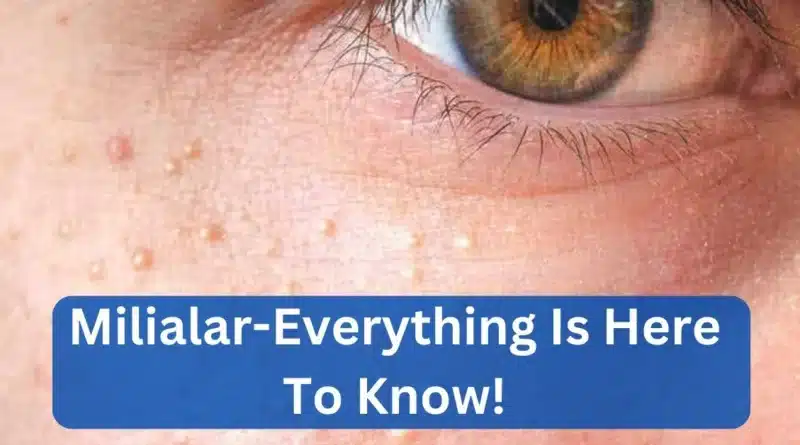Milialar: Understanding its Impact on Skin
Firstly When it comes to maintaining healthy and glowing skin, understanding the factors that can affect it is crucial. One of these factors is Milialar, Although a common skin concern that can have a significant impact on your overall skin health. In this article, we will delve into the world of Milialar, another exploring what it is, its causes, and how to effectively address and prevent it.
What is Milialar?
Milialar, often referred to as milia, are small, white, or flesh-colored bumps that can appear on the skin’s surface. Correspondingly they are commonly seen on the face, especially around the eyes and cheeks, but can occur anywhere on the body. Milia are often confused with whiteheads or acne, but they are a distinct skin condition.
Types of Milialar
There are four main types of milialar:
milialar crystallina: Besides This is the most common type of Milialar, and it is characterized by small, clear blisters that are usually painless.
milialar rubra: This type of milialar is caused by inflammation of the sweat ducts. It is characterized by small, red bumps that are often itchy and painful.
milialar profunda: This type of milialar is caused by blockage of the sweat ducts deep in the skin. It is characterized by large, firm bumps that are often painful.
milialar pustulosa: This type of milialar is characterized by small, pus-filled blisters. It is the least common type of milialar, and it is often associated with infection.
Clogged Pores
Indeed One of the primary causes of Milialar is clogged pores. When dead skin cells and sebum (skin oil) get trapped in the hair follicles, Moreover it can lead to the formation of these tiny cysts.
Skin Care Products
Besides more The use of heavy or oil-based skin care products can also contribute to the development of milia. Similarly These products can obstruct the pores, making it difficult for the skin to shed dead cells.
Sun Damage
Excessive sun exposure can damage the skin, causing it to thicken and make it harder for dead skin cells to slough off naturally, leading to Milialar.
Appearance
Regarding Milia appear as small, raised bumps on the skin, often with a white or yellowish center. They are typically painless and don’t cause redness or inflammation.
Location
Additionally These tiny cysts are most commonly found on the face, especially around the eyes, nose, and cheeks.
Prevention and Treatment
To prevent Milialar, it’s important to exfoliate the skin gently. Exfoliation helps in removing dead skin cells and reducing the risk of clogged pores.
Proper Skin Care Products
Choosing non-comedogenic or oil-free skin care products can reduce the risk of developing milia. Your pores are less likely to get clogged by these products.Avoid Squeezing
Resist the urge to squeeze or pop milia, as this can lead to infection and scarring. It’s best to consult a dermatologist for safe removal.
Seeking Professional Help
subsequently If you have persistent milia or are unsure about the best course of action, consult a dermatologist. They can provide effective treatments and recommendations.
Conclusion
Lastly In conclusion, Milialar, or milia, may seem like a minor skin issue, but it can impact your overall skin health and appearance. Understanding its causes and knowing how to prevent and treat it is essential for maintaining clear and radiant skin. Remember to be gentle with your skin, choose the right skincare products, and seek professional help when needed.




